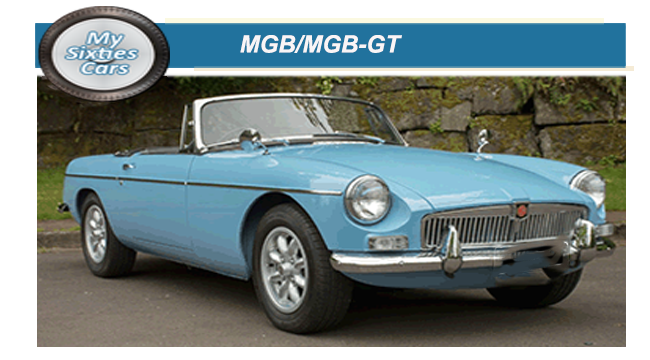
During the Sixties, when it seemed like every second car produced was destined to become a classic, the MGB stands out from the crowd as being the most popular sports tourer/coupe combination.
With the MGB roadster and its coupe version, the MGBGT, the design team at MG really hit the nail on the head, producing a car that looked good, was robust and reliable, inexpensive to buy and even more so to run.
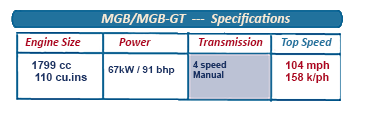
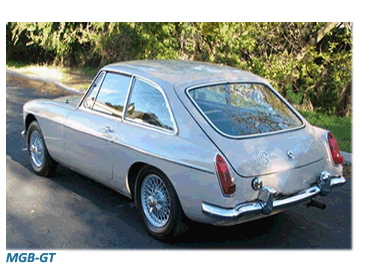 The MGB roadster was launched in 1962, the first MG sports car to boast unitary construction. Early impressions were very favourable, even considering it had been given the unenviable task to replace the much-loved MGA.
The MGB roadster was launched in 1962, the first MG sports car to boast unitary construction. Early impressions were very favourable, even considering it had been given the unenviable task to replace the much-loved MGA.
From a structural viewpoint, the MGB was light years away from its predecessor, with its monocoque design considerably lighter than the body on frame construction traditionally used on MG sports cars since the early days,
Another first in the MGB was the inclusion of “ crumple zones” in the design, which would absorb the bulk of the impact in the event of an accident.
Among the luxury items fitted on the MGB which were conspicuous by their absence in the MGA were wind-up windows, a hood that was much easier to open and close and a relatively spacious interior.
![]()
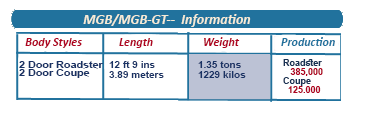 The roadster had a comfortable interior with wind-up windows and a parcel shelf behind the seats.
The roadster had a comfortable interior with wind-up windows and a parcel shelf behind the seats.
Powered by a four-cylinder 1.8-litre engine and — unlike the MGA it replaced and the Triumph TRs with which it competed the MGB had monocoque rather than body-on-chassis construction.
This method of construction reduced weight and costs allowing the MGB to be marketed at an attractive price.
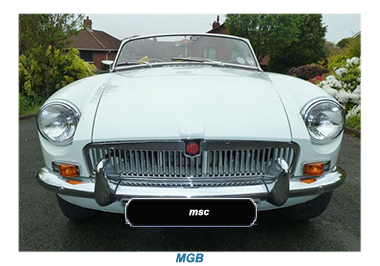 The roadster was upgraded as the Mk II in 1967, with an all-synchromesh gearbox and the option of automatic transmission.
The roadster was upgraded as the Mk II in 1967, with an all-synchromesh gearbox and the option of automatic transmission.
Various other cosmetic changes took place until the Mk III was introduced in 1972.
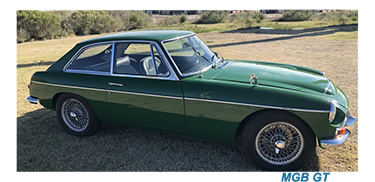 Though the MGB roadster could be bought with a removable hardtop at extra cost, BMC realised that there was more to be had from the basic design.
Though the MGB roadster could be bought with a removable hardtop at extra cost, BMC realised that there was more to be had from the basic design.
So from 1965, BMC introduced a sister model, marketed as the MGB-GT.
The MGB-GT stood out with its strikingly attractive fixed-roof fastback body. BMC were rightly proud of their new model, which they marketed as a practical 2+2.
So positive was the initial impressions that members of the motoring media were even heard to point out that the GT version was a better-looking car than the soft top.
BMC marketed the MGB-GT as a four-seater, although rear seat space was only suitable for small children, due to lack of leg and headroom.
![]()
On the upside, the GT’s large, sloping tailgate allowed easy access to generous luggage space, beginning the trend for sporting hatchbacks.
A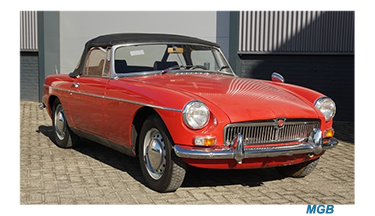 lthough the GT was 160 pounds (73 kg) heavier than the roadster, handling remained good by the standards of its day.
lthough the GT was 160 pounds (73 kg) heavier than the roadster, handling remained good by the standards of its day.
The roof helped to reduce body flexing and marginally improve aerodynamics.
This brilliant sports car, with its clean lines and comfortable ride, would be around for nearly twenty years, with well over half a million MGBs (and derivatives) sold, making it the most commercially successful UK sports car of the Sixties, if not the entire millenium.






